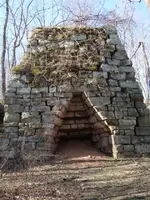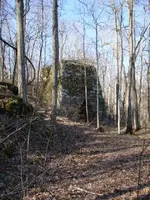-Ki-
Hero Member
- Joined
- Feb 12, 2009
- Messages
- 642
- Reaction score
- 574
- Golden Thread
- 0
- Location
- EASTERN KENTUCKY
- Detector(s) used
- MD & Handwand "CaveHunter"Hiker" SonyDigital SLR
Truckinbutch
I totally understand where your coming from, and totally respect Scott and his research... With the Swift silver mine legend, and me living right in the heart of the Swift lore, i tend to agree to disagree. What i was meaning in the above post was in years past people around here Swift hunting have more than once ran up on the Hominy holes and thought they were molds, alot of history in the rocksheltors were destroyed by treasurehunters digging and sifting. Alot of Indian artifacts where destroyed, I just wanted to let people know of somewhat to look for Swifthunting, and not mistake the historic Indian sites as Swift sites........
Now with the hammer, hummmmmm that's very interesting to say the least...
I totally understand where your coming from, and totally respect Scott and his research... With the Swift silver mine legend, and me living right in the heart of the Swift lore, i tend to agree to disagree. What i was meaning in the above post was in years past people around here Swift hunting have more than once ran up on the Hominy holes and thought they were molds, alot of history in the rocksheltors were destroyed by treasurehunters digging and sifting. Alot of Indian artifacts where destroyed, I just wanted to let people know of somewhat to look for Swifthunting, and not mistake the historic Indian sites as Swift sites........
Now with the hammer, hummmmmm that's very interesting to say the least...





